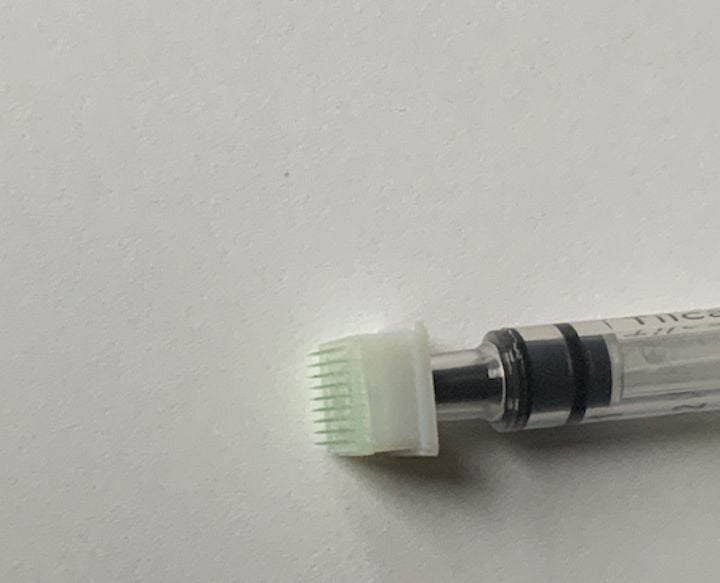
BMF has been collaborating with Carnegie-Mellon University on a very promising approach to COVID-19 vaccines.
Today there are multiple seemingly-effective vaccines against our common virus foe, but that’s only half of the problem: these vaccines must be produced in sufficient volumes to allow everyone (and by “everyone” I mean literally everyone on the planet) to be vaccinated.
That’s the big hold up right now: vaccine factories are pumping the stuff out as fast as they can, and countries squabble about who gets how much. That’s an issue with supply.
It is possible to build additional factories, but by the time they are built it will be all but over anyway.
However, researchers at CMU have been developing what could be a revolutionary way to solve the vaccine capacity and production problem: use less vaccine.
Their approach is a unique style of delivery that’s different from the traditional syringe that is being used worldwide to administer all the vaccine types. They explain the approach:
“The novel vaccine delivery method allows for a very small amount—potentially 1/100th of the dose of a traditional vaccine—to elicit strong and long-lasting immunity against SARS-CoV-2 infections. This can significantly help to reduce vaccine shortages.”
A key element of the new delivery method is the use of “microneedles”, which are far smaller than normal syringes.
That’s where Boston-based BMF comes in. They have developed an effective 3D printing process for extremely small objects. Their microArch S130 3D printer has a resolution of 0.002mm. Read that again, it is not 0.02mm, it is 0.002mm.
The S130 could certain be used to produce the tiny needles required for the new CMU delivery system. BMF also has developed several resin materials for the system that could potentially be used for the solution.
If this combination of technologies works, it could be a massive boost to solve the pandemic.
Some may suggest that this invention could be too late as some countries are well on their way to complete vaccination of their population. In the US, it’s been said by President Biden that there will be sufficient vaccines available for all citizens by the end of May. The story is similar in several other countries.
But I disagree that the invention could be too late. That’s because the virus does not respect country boundaries, and if it is spreading anywhere, it can still emerge in seemingly vaccinated populations. The problem is that not everyone is vaccinated; some cannot due to medical conflicts, while there are others, particularly in the US, who will refuse a vaccine.
Therefore it’s critical to eliminate the virus from EVERY country. That has been the project of the World Health Organization, but the sheer number of people involved is staggering. If there was a way to reduce the need for vaccine capacity by 100X, that would go a very long way to speeding up the global vaccination process.
Once again, and not for the last time, 3D printing saves the day.
Via CMU Mechanical Engineering and BMF
